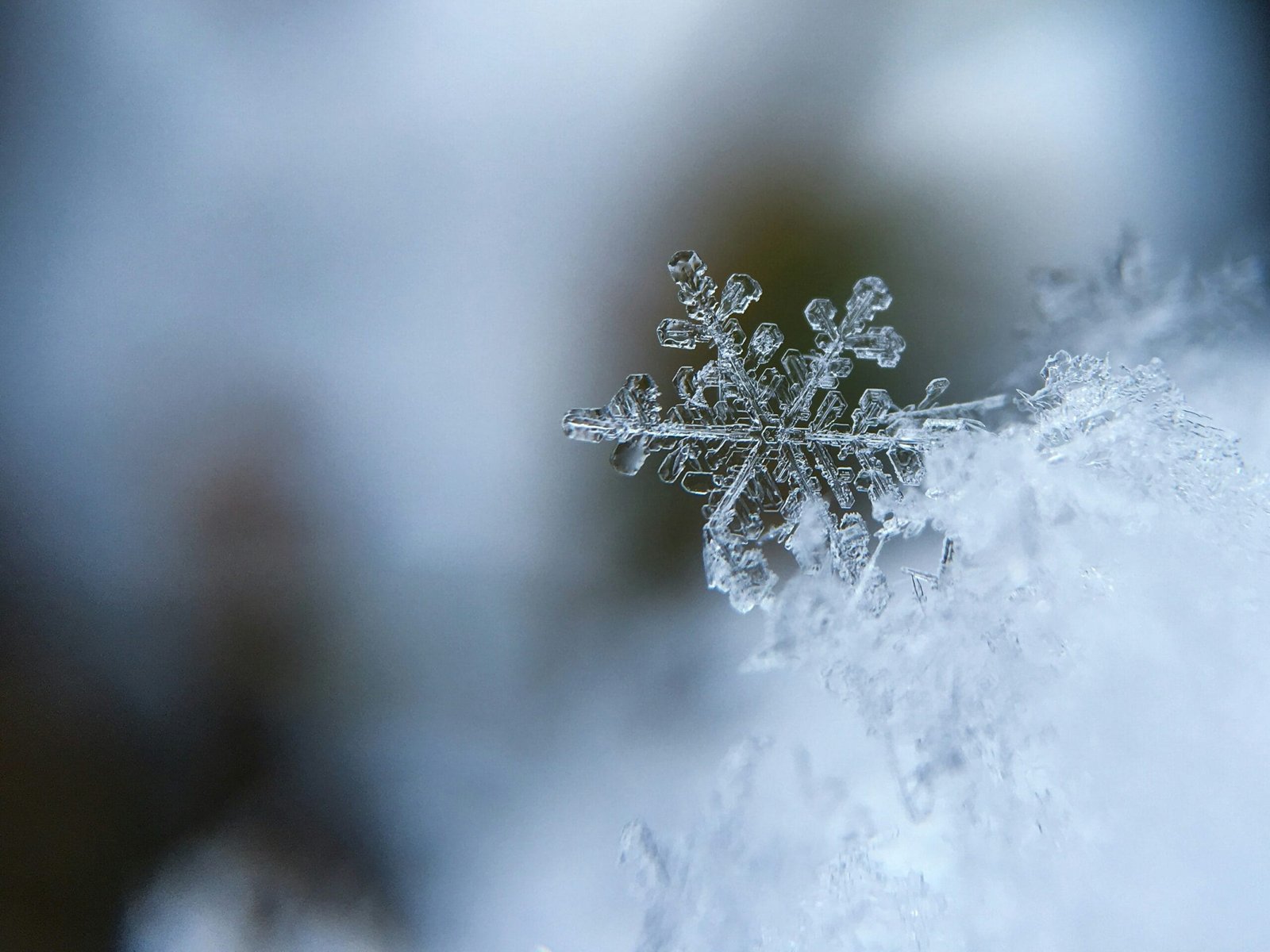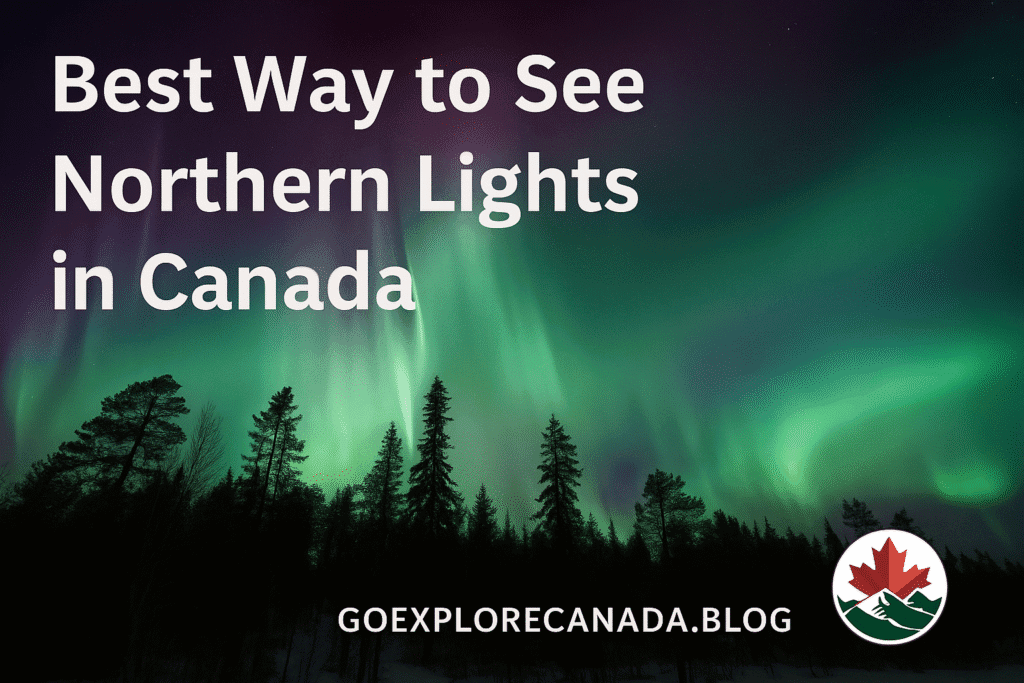
The Winter Wonderland: Exploring Snow in Eastern Canada
Posted in Seasonal Travel
Introduction to the Snowy Season
Snow in Eastern Canada is renowned for its stunning winter landscapes, characterized by a remarkable variety of snowfall patterns that significantly shape the region’s culture and way of life. From the picturesque provinces of Newfoundland and Labrador to the snow-laden towns of Quebec, the winter season introduces a unique charm that captivates both locals and visitors alike. The sheer volume of snow in Eastern Canada can reach impressive heights, with some areas accumulating between 200 to 400 centimeters annually, creating a breathtaking backdrop for winter enthusiasts.
The snow is not merely a seasonal occurrence; it plays a crucial role in the local ecosystem and economy. For instance, winter sports such as skiing, snowboarding, and snowshoeing draw countless tourists to the region, boosting local businesses and fostering a sense of community among residents who embrace the cold. The cultural significance of snow in Eastern Canada is also evident in the vibrant festivals and events held during the snowy months, celebrating traditions and communal spirit. Events like the Quebec Winter Carnival and the Winterlude in Ottawa showcase the region’s affinity for outdoor activities amid the winter wonderland.
Variations in snowfall can be attributed to the geographical diversity of Eastern Canada. Coastal regions may experience milder winters with heavy, wet snow, while inland areas often endure colder temperatures and lighter, powdery snow. These differences contribute to a multifaceted winter experience, offering something for everyone. Moreover, the picturesque scenery is enhanced by the pristine white cover that blankets vast expanses of forest and urban landscapes alike, inviting exploration and adventure. The allure of winter persists throughout the season, leaving an indelible mark on the lives of those who inhabit this snowy paradise.
The Geography of Snow in Eastern Canada
The unique geography of Eastern Canada plays a significant role in the region’s snowfall patterns, making it a prominent feature of the winter landscape. The proximity to the Atlantic Ocean contributes to the maritime climate, affecting humidity levels and precipitation. The warmer waters of the ocean juxtaposed with colder air masses in winter lead to the formation of snow events known as Nor’easters, which can bring heavy snowfall and harsh conditions to coastal areas and inland regions alike.
In addition, the presence of mountainous terrains, particularly the Appalachian Mountains, influences snowfall amounts. These mountains act as barriers that intercept moist air coming in from the Atlantic, leading to orographic lift, which enhances precipitation. Consequently, higher elevations often experience significantly greater snowfall compared to lower-lying regions. For instance, the regions surrounding the Gaspé Peninsula frequently receive substantial snowfall due to their elevation and proximity to both oceanic and continental weather systems.
Urbanization also affects the distribution of snow in Eastern Canada. The growth of cities can create a localized climate phenomenon known as the urban heat island effect, whereby urban areas experience slightly warmer temperatures than their rural surroundings. This can lead to reduced snowfall, as precipitation in these areas may fall as rain rather than snow. Urban planning and infrastructure can also influence snow accumulation and removal, impacting how well cities manage winter conditions.
In summary, the interplay of geographic factors such as the Atlantic Ocean, mountainous terrains, and urbanization significantly shapes the winter weather patterns in Eastern Canada. The resulting snow in eastern Canada varies widely, creating diverse winter experiences across the region. Understanding these geographical influences allows residents and visitors alike to appreciate the complexity and beauty of Eastern Canada’s winter wonderland.
The Different Types of Snow and Their Significance
Eastern Canada is renowned for its beautiful and diverse winter landscapes, characterized by several types of snow, each with distinct properties and implications. Understanding these types of snow is essential for appreciating the region’s winter weather and its effects on outdoor activities, transportation, and the natural environment.
One of the most recognized types of snow is powder snow. This light and fluffy snowfall is often sought after by skiers and snowboarders for its exhilarating properties. Powder snow has low moisture content, which allows it to remain dry and airy. It’s ideal for winter sports, as it provides a soft landing and enhances the experience in ski resorts across Eastern Canada. However, conditions can shift rapidly, and heavy snowfall can hinder visibility on slopes, presenting challenges for transportation in affected areas.
Another significant type of snow is wet snow, which occurs when temperatures hover near the freezing point. This type of snow contains higher moisture levels and tends to pack down, making it heavy and dense. While wet snow can be ideal for creating snowmen and snowballs, it poses risks, such as the potential for collapse under its weight. The impact on transportation is noteworthy, as wet snow often leads to slick road conditions, increasing the risk of accidents and requiring more resources for snow removal.
Lastly, blizzards are severe snowstorms that can disrupt daily life in Eastern Canada. These storms are characterized by strong winds and low visibility due to heavy snowfall, often resulting in travel advisories and school cancellations. Blizzards profoundly impact not only human activities but also the natural environment, as they can reshape landscapes, affect wildlife habitats, and initiate avalanches in some areas. Understanding the different types of snow and their implications allows residents and visitors to navigate Eastern Canada’s winter wonderland more effectively.
Snow Sports and Activities in Eastern Canada
Eastern Canada is renowned for its breathtaking winter landscapes and an array of thrilling snow sports and activities that attract enthusiasts from around the globe. The region is home to numerous ski resorts, pristine snow-covered trails, and picturesque locations that offer the perfect backdrop for a variety of winter activities. Skiing and snowboarding are perhaps the most popular pastimes, drawing both beginners and seasoned experts alike. Iconic ski destinations, such as Mont Tremblant in Quebec and Whistler in British Columbia, offer diverse terrain suited for all skill levels, from gentle slopes for novices to challenging runs for the more experienced.
Beyond skiing and snowboarding, snowmobiling is a favored activity in Eastern Canada, with expansive trails weaving through stunning forests and open countryside. Locations such as the Laurentians in Quebec and New Brunswick’s trails provide exhilarating opportunities for adventure seekers. Snowmobiling is not only a thrilling way to explore the winter landscape but also allows participants to connect with nature in an engaging manner.
Ice fishing is another beloved winter tradition, especially in provinces like Ontario and Newfoundland and Labrador. This unique outdoor pastime invites individuals to drill holes in frozen lakes and patiently wait for fish to bite. Local communities often host ice fishing tournaments, fostering camaraderie among participants and residents. For those new to these activities, local ski schools and guided tours are available, ensuring a safe and enjoyable experience. Furthermore, various winter festivals and competitions showcase the vibrant snow culture, emphasizing the joy of snow in Eastern Canada.
Impact of Snow on Local Wildlife
Snow plays a significant role in shaping the ecosystems of Eastern Canada, particularly during the harsh winter months. Many species have developed remarkable adaptations to survive and thrive in snowy conditions. For instance, the snowshoe hare, which gets its name from its large hind feet, can navigate deep snow more effectively than its predators. Its fur changes color from brown to white in winter, providing both camouflage and insulation against the cold. This adaptation helps the snowshoe hare evade predators while maintaining its body heat in a snowy environment.
Bird species, such as the black-capped chickadee, exhibit behaviors that assist in their survival during winter. These birds have a unique ability to remember the locations of thousands of seeds and other food sources, which they cache for later use. The heavy snowfall can sometimes obscure food supplies; however, their remarkable memory allows them to retrieve hidden food even when it is buried in the snow. This resilience underscores how various species have adapted to cope with the seasonal challenges presented by snow in Eastern Canada.
Additionally, the presence of snow can influence not just the behavior but also the habitats of wildlife. For example, snow-covered landscapes create a blanket, insulating the ground and maintaining soil temperatures, which is crucial for certain plant species that provide food and shelter for various animals. Furthermore, snow can create new routes for movement across the landscape, permitting animals like moose to travel more easily in search of food. The thick layer of snow can also limit access to some predators, allowing smaller mammals to thrive in environments that would otherwise put them at risk.
Through these varied adaptations and behaviors, wildlife in Eastern Canada continues to demonstrate remarkable resilience in the face of the challenges presented by winter snow. Nature’s ability to cope with such harsh conditions is a testament to the intricate balance within these ecosystems.
Snow Removal and Infrastructure Challenges
The winter months in Eastern Canada are characterized by significant snowfall, which presents a range of challenges for both urban and rural infrastructure. Municipalities are tasked with the formidable responsibility of ensuring that transportation routes remain passable, public spaces are safe, and essential services continue to function amidst heavy snow accumulation. Snow removal strategies employed vary depending on the geography, population density, and available resources of the area.
To effectively address the challenges posed by snow, cities often implement a tiered snow removal system. This involves prioritizing main roadways, public transport routes, and emergency access points before addressing side streets and residential areas. The economic impact on municipalities can be profound, particularly in years of above-average snowfall. Budget allocations for snow removal often increase, leading to strains on public finances. This necessitates careful planning and management to balance between maintaining infrastructure and addressing other critical city services.
In recent years, innovative technologies have emerged to enhance snow management practices. Advanced snow plowing equipment, equipped with GPS tracking and real-time data analytics, allows municipalities to monitor conditions and optimize snow removal routes more effectively. Furthermore, the integration of automated systems has shown promise in reducing labor costs and improving response times during severe winter storms.
Another aspect of snow management involves community engagement and public awareness. Local governments are increasingly focused on educating residents about snow removal policies and encouraging them to report conditions that require attention. This collaborative approach fosters a greater sense of community responsibility. As snow continues to be a defining element of winter in Eastern Canada, the ongoing adaptation and innovation in snow removal strategies will be essential for maintaining operational efficiency throughout the season.
Cultural Celebrations of Snow
In Eastern Canada, snow serves as both a backdrop and a catalyst for a plethora of cultural celebrations that reflect the region’s unique relationship with winter. One of the most renowned events is the Quebec Winter Carnival, held annually in Quebec City. This festival, one of the largest and most popular of its kind, transforms the city into a vibrant snow-covered wonderland. Visitors can engage in a range of activities, including snow slides, ice skating, and participating in the famous night parade that showcases elaborate floats and winter-themed costumes. The carnival fosters a spirit of community, as residents and tourists alike come together to celebrate the beauty of snow in Eastern Canada.
Beyond the carnival, various ice sculpture contests take place across the region, where talented artists chisel intricate masterpieces from blocks of ice, celebrated for their stunning craftsmanship. These competitions typically occur in towns with rich winter heritage, drawing spectators who marvel at the creativity showcased against the frozen landscape. Events such as the International Ice Carving Competition in Harbin, hosted by residents of Eastern Canada, exemplify how snow inspires artistry and camaraderie among participants, while also highlighting local culture.
The traditions surrounding snow extend beyond specific events. Seasonal activities often include regional dishes celebrating winter’s bounty, such as traditional sugar pie or hearty stews that warm patrons during the colder months. Many communities also organize snowshoeing and cross-country skiing events, emphasizing not only outdoor activity but also the social aspect of winter sports, uniting friends and families in the frosty environment.
These cultural celebrations surrounding snow enhance the sense of belonging, creating a unique bond through shared experiences and traditions. In the heart of Eastern Canada, snow is more than just precipitation; it signifies warmth, community spirit, and the beauty of nature during the winter months.
Climate Change and Its Effect on Snow Patterns
In recent years, the impact of climate change on snow in Eastern Canada has become increasingly apparent. Rising average temperatures have been documented across various regions, leading to significant alterations in winter weather patterns. This warming trend influences both the quantity and quality of snowfall, ultimately reshaping the winter landscape experienced by local communities.
One of the prominent effects of climate change is the variability in precipitation. While certain areas may experience heavy snowfall during brief periods, others may suffer from inadequate snow accumulation throughout the winter. This inconsistency not only affects winter sports such as skiing and snowboarding but also has broader implications for ecosystems that rely on predictable snowfall for water resources during the warmer months. It is essential to recognize that a dramatic increase in rain as opposed to snow can exacerbate flooding risks and adversely impact agriculture.
Moreover, shorter winter seasons have emerged as another significant consequence of shifting climatic conditions. Many regions in Eastern Canada are witnessing a decline in the duration of snow cover, further shortening the window for activities dependent on snow. The phenomenon known as a “snow drought” has become more common, leading to challenges for communities that rely on winter tourism for economic stability. As the winter season continues to diminish, the cultural and recreational values associated with snow are increasingly at risk.
These changes to snow patterns in Eastern Canada are not merely transient fluctuations; they represent a critical shift in the region’s climate dynamics. The long-term implications extend beyond immediate environmental concerns, affecting both local economies and social structures. It is crucial for communities and policymakers to address these challenges effectively to ensure a sustainable future where the beauty and wonder of winter can continue to flourish despite the changing climate.
Conclusion: Embracing the Beauty of Snow in Eastern Canada
As we conclude our exploration of the enchanting winter landscapes characterized by snow in Eastern Canada, it becomes evident that this region offers a unique blend of challenges and beauty during the colder months. The snow transforms the environment, creating picturesque scenes and providing various opportunities for outdoor activities that capture the essence of winter. From skiing in the breathtaking mountains of Quebec to snowshoeing through the tranquil forests of New Brunswick, the allure of snow invites both residents and visitors to engage with nature in ways that are often overlooked in other seasons.
The beauty of fresh snowfall blanketing the rugged terrain showcases the majestic character of Eastern Canada’s natural resources. The snow creates a canvas for winter sports enthusiasts and a playground for families seeking to contribute to cherished seasonal traditions. Moreover, it fosters community engagement through winter festivals, which highlight the cultural significance of snow in Eastern Canada. Such events encourage people to come together, celebrate, and appreciate the local customs that thrive in a snowy atmosphere.
However, it is essential to recognize the challenges that accompany heavy snowfall, such as transportation issues and the need for proper winter gear. By being mindful of these aspects while embracing the snowy environment, individuals can cultivate a deeper respect for the land and its seasonal manifestations. Ultimately, the experiences and memories crafted in this winter wonderland can deepen one’s connection to Eastern Canada’s diverse landscapes. Therefore, we encourage readers to explore and immerse themselves in the splendor of Eastern Canada’s snowy adventures, cherishing the unique opportunities that this season presents.

Welcome to GoExploreCanada.com, your go-to guide for exploring Canada. Discover tips, travel guides, and stories about the breathtaking landscapes, vibrant culture, and delicious cuisine from coast to coast. Join us on an adventure to uncover the hidden gems of Canada!
“Canada Is My Therapy” Hiking & Camping Shirt – Explore. Camp. Breathe.
Price range: $20.50 through $34.00















